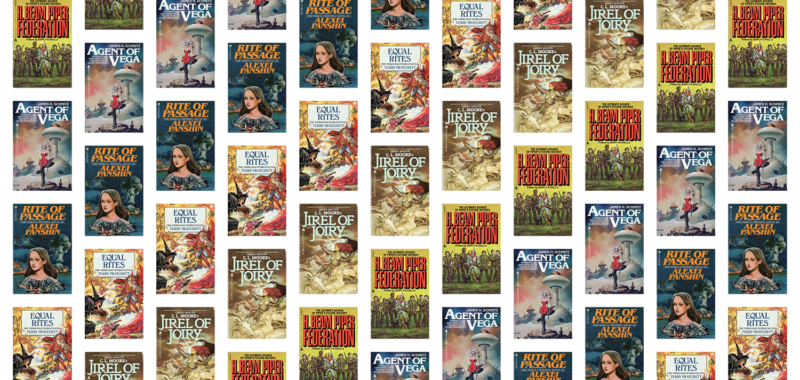Recently, a younger person reading a vintage award-winning novel I will not name beyond saying that it was Larry Niven’s Ringworld… um let’s see, where was I… this younger person observed that the primary woman character in the book was limited to serving as eye-candy and also as someone to whom the novel’s unlovable protagonist Louis Wu could explain things at great length. The usual conversation ensued, including an assertion that the novel is a product of its time1.
One might infer, therefore, that to look to older SFF for interesting women characters is futile. This is incorrect. Older SFF offers a bell curve of representation where women characters are concerned. Authors like Niven, Garrett, Laumer, and early Anderson are over at what we will diplomatically call the MCP end of the scale. There is another end of the scale, as these five vintage stories demonstrate.
Jirel from Black God’s Kiss by C.L. Moore (1934)
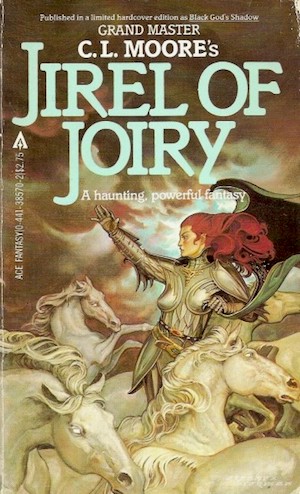
Warlord Guillaume is astounded to discover that the small kingdom of Joiry’s most ardent defender is the fierce warrior woman Jirel. Guillaume’s army overcomes the keep’s defenses. Guillaume is certain that Jirel will surely swoon at his feet provided he dominates her sufficiently.
This assessment is flawed. Jirel is extremely possessive of her little kingdom and is little inhibited by morals when it comes to keeping that which is hers. If her impressive martial prowess is insufficient, there are always demonic forces Jirel can employ.
Moore did have a small advantage when it came to realizing that women could be more than eye-candy, plot rewards, or (if in a Venus Equilateral story) someone who can smirk knowingly as their engineer boyfriend does something that is clearly going to end in tears. Catherine Moore was a woman herself2. The remaining examples are all by men3.
Martha Dane from Omnilingual by H. Beam Piper (1957)

Expeditions from Earth to Mars found a nearly dead world. Like Earth, Mars gave birth to a race of (surprisingly human-looking) intelligent beings. While long extinct, the Martians left vast troves of written material humans could easily peruse… if only there were any way to decipher an unknown written language unrelated to any known language.
Enter Martha Dane. The task of deciphering Martian seems impossible. Her coworkers are not exactly supportive. However, there is something that can serve as Martian’s Rosetta Stone, and Martha will be one to discover it.
Competent women are a recurring element in Piper’s fiction (the one novel where women are relegated to secondary status is set in a damaged society). I could cite characters like Ruth Ortheris, Princess Rylla, Sylvie Jacquemont—but they were supporting characters. In this novella, Dane is the protagonist.
Grandma Erisa Wannattel from “The Second Night of Summer” by James H. Schmitz (1950)
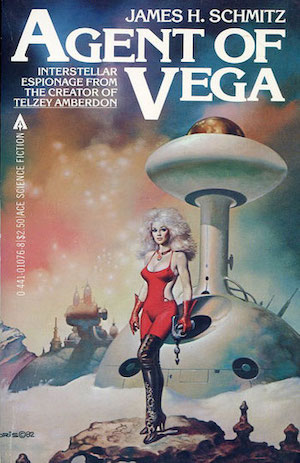
Some in the Valley of Wend see Grandma Wannattel as a source of amusement. Others value her folk medicine. Local authorities are inclined to view her as disruptive—a convenient scapegoat for untoward developments. Who better to blame than an eccentric old lady without any obvious powerful allies?
Grandma Wannattel has powerful allies whose nature would astound Wend. She does not need them. She was selected for her task because the Department of Galactic Zones on far-off Jeltad knew she had the skills and determination necessary for success. If the Department’s assessment is wrong, if Grandma is not up to the task, then Wend, along with the rest of the planet Noorhut, is doomed.
Schmidt is another Golden Age author fond of strong women leads. The problem here was to narrow down the possible examples to just the one.
Mia Havero from Rite of Passage by Alexei Panshin (1968)
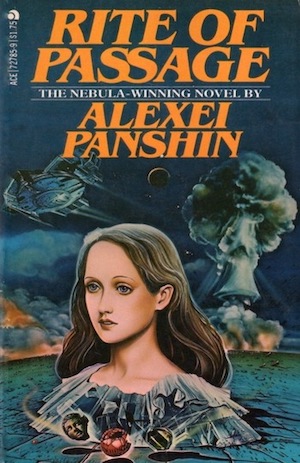
The Ships delivered colonists to their new homes, saving them from doomed Earth. The Ships use their carefully sequestered wealth of Terrestrial technology to rule the colonies. They dribble out tech secrets in return for the raw materials they need. They are particularly vigilant to ensure that no colonies allow explosive population growth (which they believe doomed Earth). Not every colony world is happy with this oversight, which is why from time to time the Ships scour disobedient colony worlds clean of life.
Twelve-year-old Mia Havero grew up on a Ship. Mia has no reason to think of the current state of affairs as anything but natural and just. Mia will soon face her Trial. The Trial’s purpose is to determine if the tween is fit to live aboard a Ship. The Trial’s actual result is to open Mia’s eyes to injustices that she previously ignored.
The novel features sympathetic characters, competent prose, and a good narrative pace. Some people have called this the best Heinlein juvenile not written by Heinlein.
Granny Weatherwax from Equal Rites by Terry Pratchett (1987)
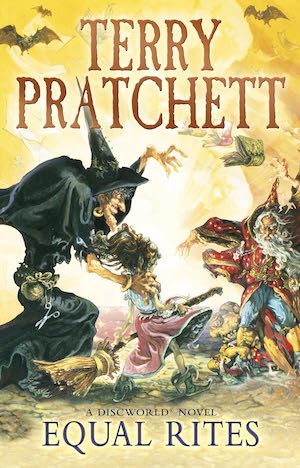
On the Discworld, it is a well-established fact that the eighth son of an eighth son will be a wizard. Wizard Drum Billet, desirous of a worthy successor, seeks out just such an eighth of an eighth… only to realize too late that Esk may be the eighth child of an eighth son, but she’s a daughter, not a son.
The wizarding world is not keen on social reform. Just because Esk’s possession of a staff means she has the potential to be a wizard does not mean that the wizards approve of the development. Enter the formidable Granny Weatherwax. Granny is no wizard. She is just a witch determined to reshape the world into a more pleasing order, and a witch with sufficient skill and determination to do so.
I know for a lot of people, 1987 is too recent to be considered older. Alas, the median age of a human on Earth is 30.62 years. 2024 less 31 years would be 1993. More than half the human population was not even born when Equal Rites was published. Also the 1980s were a golden age of backlash against women in speculative fiction, as detailed here, not to mention a certain infamous essay that enhanced the stature of cyberpunk in part by erasing all of the SF written by women in the 1970s. But then, when hasn’t there been a backlash against women underway?
Of course, there were certainly more than five SFF authors who managed to rise above their time and place when it came to writing women characters. No doubt I overlooked authors, and works, that are utterly obvious to my devoted readers. Feel free to mention these works in comments below.

